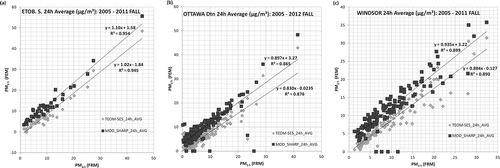Figures & data
Figure 1. Locations of OMOE air monitoring stations with collocated TEOM-SES and NAPS FRM 24-hr samplers where FRM data have been available since 2005 in Ontario.
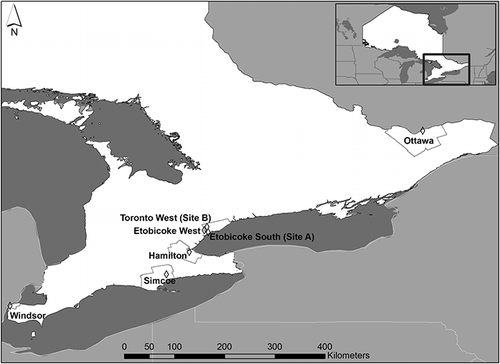
Table 1. Physicochemical variables of interest used in the MLRA of hourly TEOM-SES and SHARP 5030 PM2.5 data from two ambient air sampling locations in Ontario for the period September 1, 2010, to November 20, 2012
Table 2. Multiple linear regression output (P < 0.05) for hourly PM2.5 data collected with the TEOM-SES and SHARP 5030 monitors at Site A for the period September 1, 2010, to November 20, 2012
Figure 2. Observed (untransformed) TEOM-SES hourly PM2.5 concentrations plotted against the corresponding observed SHARP 5030 values at (a) Site A and (b) Site B.
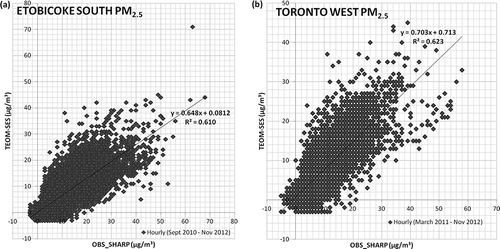
Figure 3. Transformed TEOM-SES hourly PM2.5 concentrations plotted against the corresponding observed SHARP 5030 values at (a) Site A and (b) Site B.
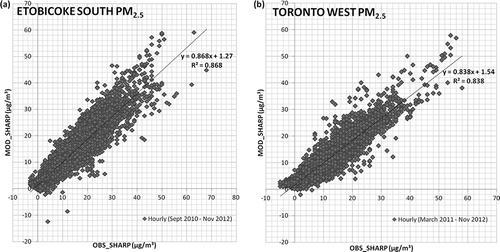
Table 3. Regression parameters of originally observed and transformed hourly TEOM-SES PM2.5 against SHARP 5030 data by seasons at Site A for the period September 2010 to November 2012
Figure 4. Comparisons of the (a) observed and (b) transformed TEOM-SES hourly PM2.5 concentrations with the corresponding observed SHARP 5030 values. Site A; winter.
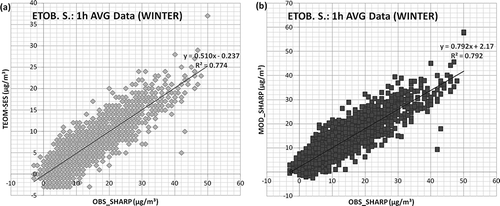
Figure 5. Comparisons of the (a) observed and (b) transformed TEOM-SES hourly PM2.5 concentrations with the corresponding observed SHARP 5030 values. Site A; summer.
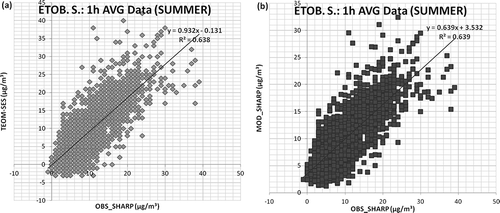
Figure 6. Normal distribution plots of the Z-scores of the variable coefficients obtained from MLRA of (a) winter, (b) spring, (c) summer, and (d) fall PM2.5 data at Site A and Site B during the study period. Shelter temperature in winter and sample relative humidity in spring may be neglected from the MLRA.
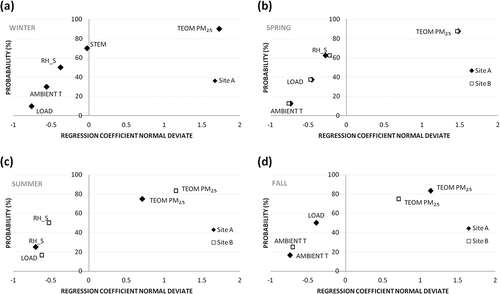
Figure 7. Winter comparisons of the 24-hr-averaged original (gray diamonds) and transformed (black squares) TEOM-SES PM2.5 values against the NAPS 24-hr FRM at (a) Etobicoke South research station (Site A), (b) Ottawa Downtown, and (c) Windsor West.

Table 4. Parameters of linear regression of originally observed and transformed TEOM-SES PM2.5 data against the 24-hr NAPS FRM values across seven air monitoring locations in Ontario for FRM data collected since 2005
Figure 8. Fall comparisons of the 24-hr-averaged original (gray diamonds) and transformed (black squares) TEOM-SES PM2.5 values against the NAPS 24-hr FRM at (a) Etobicoke South research station (Site A), (b) Ottawa Downtown, and (c) Windsor West.
